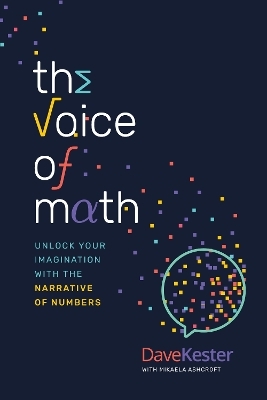
Biscuits of Number Theory
Mathematical Association of America (Verlag)
978-0-88385-340-5 (ISBN)
- Titel ist leider vergriffen;
keine Neuauflage - Artikel merken
You are probably wondering, 'What exactly are biscuits of number theory?' In this book, the editors have selected easily digested bite-sized articles and notes which aid an understanding of number theory. This is a collection of articles chosen for being exceptionally well written and capable of being appreciated by anyone who has taken (or is taking) a first course in number theory. The list of authors is outstanding, and the chapters cover arithmetic, primes, irrationality, sums of squares and polygonal numbers, Fibonacci numbers, number theoretic functions and elliptic curves, cubes, and Fermat's last theorem. As with any anthology, you don't have to read the chapters in order, you can dive in anywhere, making this book ideal for use as a textbook supplement for a number theory course.
Arthur Benjamin earned his B.S. in Applied Mathematics from Carnegie Mellon and his Ph.D. in Mathematical Sciences from Johns Hopkins. Since 1989, he has taught at Harvey Mudd College, where he is Professor of Mathematics and past Chair. In 2000, he received the Haimo Award for Distinguished Teaching from the Mathematical Association of America. Since 2006 he has served as the MAA's Polya Lecturer. He has been featured in numerous magazines, television and radio programmes. Ezra Brown grew up in New Orleans and has degrees from Rice University and Louisiana State University. Since 1969 he has been in the Mathematics Department at Virginia Tech, where he is currently Alumni Distinguished Professor. He is the author of some sixty papers, mostly in number theory and discrete mathematics. He received the Outstanding Teacher Award from the MD/DC/VA Section of the MAA, and he currently serves as that section's governor. He received the Carl Allendoerfer Award (2003) and three George Polya Awards (2000, 2001, 2006) from the MAA for expository writing.
Introduction; Part I. Arithmetic: 1. A dozen questions about the powers of two; 2. From 30 to 60 is not twice as hard Michael Dalezman; 3. Reducing the sum of two fractions Harris S. Shultz and Ray C. Shiflett; 4. A postmodern view of fractions and reciprocals of Fermat primes Rafe Jones and Jan Pearce; 5. Visible structures in number theory Peter Borwein and Loki Jörgenson; 6. Visual gems of number theory Roger B. Nelsen; Part II. Primes: 7. A new proof of Euclid's theorem Filip Saidak; 8. On the infinitude of the primes Harry Furstenberg; 9. On the series of prime reciprocals James A. Clarkson; 10. Applications of a simple counting technique Melvin Hausner; 11. On weird and pseudoperfect numbers S. J. Benkoski and P. Erdös; 12. A heuristic for the prime number theorem Hugh L. Montgomery and Stan Wagon; 13. A tale of two sieves Carl Pomerance; Part III. Irrationality and Continued Fractions: 14. Irrationality of the square root of two - a geometric proof Tom M. Apostol; 15. Math bite: irrationality of m Harley Flanders; 16. A simple proof that p is irrational Ivan Niven; 17. p, e and other irrational numbers Alan E. Parks; 18. A short proof of the simple continued fraction of e Henry Cohn; 19. Diophantine Olympics and world champions: polynomials and primes down under Edward B. Burger; 20. An elementary proof of the Wallis product formula for Pi Johan Wästlund; 21. The Orchard problem Ross Honsberger; Part IV. Sums of Squares and Polygonal Numbers: 22. A one-sentence proof that every prime p ≡ 1 (mod 4) is a sum of two squares D. Zagier; 23. Sum of squares II Martin Gardner and Dan Kalman 24. Sums of squares VIII Roger B. Nelsen; 25. A short proof of Cauchy's polygonal number theorem Melvyn B. Nathanson; 26. Genealogy of Pythagorean triads A. Hall; Part V. Fibonacci Numbers: 27. A dozen questions about Fibonacci numbers James Tanton; 28. The Fibonacci numbers - exposed Dan Kalman and Robert Mena; 29. The Fibonacci numbers - exposed more discretely Arthur T. Benjamin and Jennifer J. Quinn; Part VI. Number-Theoretic Functions: 30. Great moments of the Riemann zeta function Jennifer Beineke and Chris Hughes; 31. The Collatz chameleon Marc Chamberland; 32. Bijecting Euler's partition recurrence David M. Bressoud and Doron Zeilberger; 33. Discovery of a most extraordinary law of the numbers concerning the sum of their divisors Leonard Euler; 34. The factorial function and generalizations Manjul Bhargava; 35. An elementary proof of the quadratic reciprocity law Sey Y. Kim; Part VII. Elliptic Curves, Cubes and Fermat's Last Theorem: 36. Proof without words: cubes and squares J. Barry Love; 37. Taxicabs and sums of two cubes Joseph H. Silverman; 38. Three Fermat trails to elliptic curves Ezra Brown; 39. Fermat's last theorem in combinatorial form W. V. Quine; 40. 'A marvellous proof' Fernando Q. Gouvêa; About the editors.
| Erscheint lt. Verlag | 19.3.2009 |
|---|---|
| Reihe/Serie | Dolciani Mathematical Expositions |
| Verlagsort | Washington |
| Sprache | englisch |
| Maße | 181 x 261 mm |
| Gewicht | 720 g |
| Themenwelt | Mathematik / Informatik ► Mathematik ► Arithmetik / Zahlentheorie |
| ISBN-10 | 0-88385-340-X / 088385340X |
| ISBN-13 | 978-0-88385-340-5 / 9780883853405 |
| Zustand | Neuware |
| Haben Sie eine Frage zum Produkt? |
aus dem Bereich


